Mohamad Elhattab
Optimizing Multi-User Uplink Cooperative Rate-Splitting Multiple Access: Efficient User Pairing and Resource Allocation
Sep 03, 2024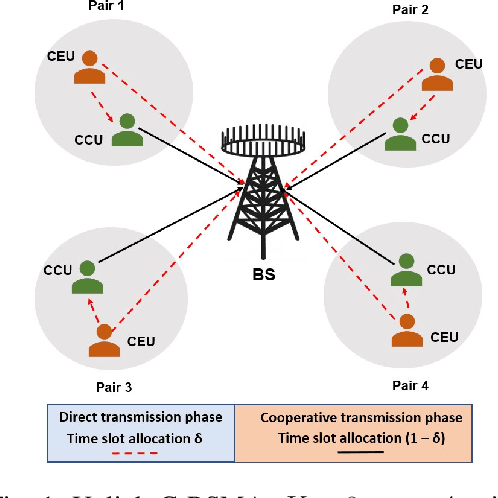
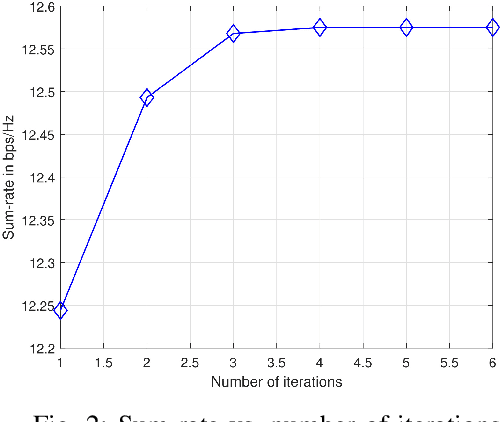
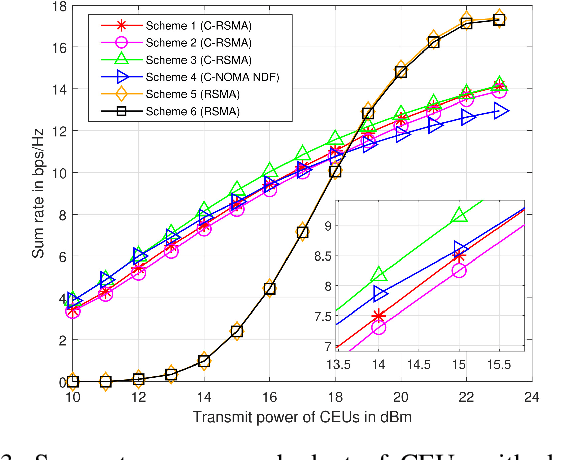
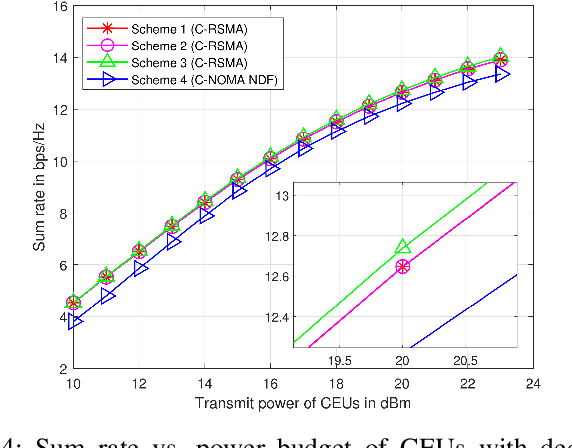
Abstract:This paper investigates joint user pairing, power and time slot duration allocation in the uplink multiple-input single-output (MISO) multi-user cooperative rate-splitting multiple access (C-RSMA) networks in half-duplex (HD) mode. We assume two types of users: cell-center users (CCU) and cell-edge users (CEU); first, we propose a user pairing scheme utilizing a semi-orthogonal user selection (SUS) and a matching-game (MG)-based approach where the SUS algorithm is used to select CCU in each pair which assists in reducing inter-pair interference (IPI). Afterward, the CEU in each pair is selected by considering the highest channel gain between CCU and CEU. After pairing is performed, the communication takes place in two phases: in the first phase, in a given pair, CEUs broadcast their signal, which is received by the base station (BS) and CCUs. In the second phase, in a given pair, the CCU decodes the signal from its paired CEU, superimposes its own signal, and transmits it to the BS. We formulate a joint optimization problem in order to maximize the sum rate subject to the constraints of the power budget of the user equipment (UE) and Quality of Service (QoS) requirements at each UE. Since the formulated optimization problem is non-convex, we adopt a bi-level optimization to make the problem tractable. We decompose the original problem into two sub-problems: the user pairing sub-problem and the resource allocation sub-problem where user pairing sub-problem is independent of resource allocation sub-problem and once pairs are identified, resource allocation sub-problem is solved for a given pair. Resource allocation sub-problem is solved by invoking a successive convex approximation (SCA)-based approach. Simulation results demonstrate that the proposed SUS-MG-based algorithm with SCA outperforms other conventional schemes.
Energy Consumption Optimization in RIS-Assisted Cooperative RSMA Cellular Networks
Aug 13, 2022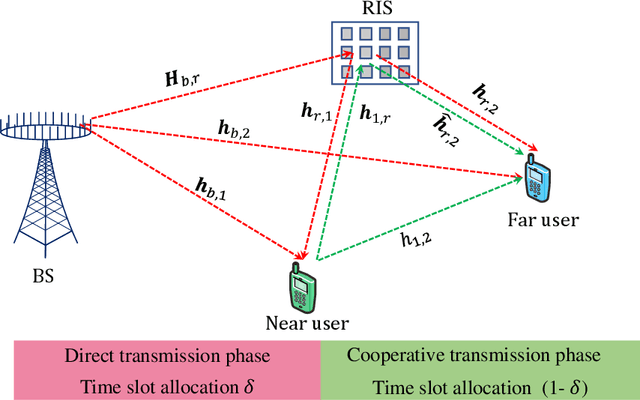
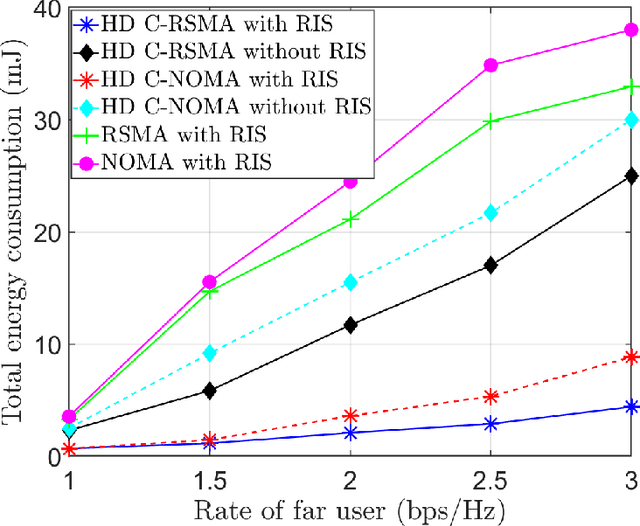
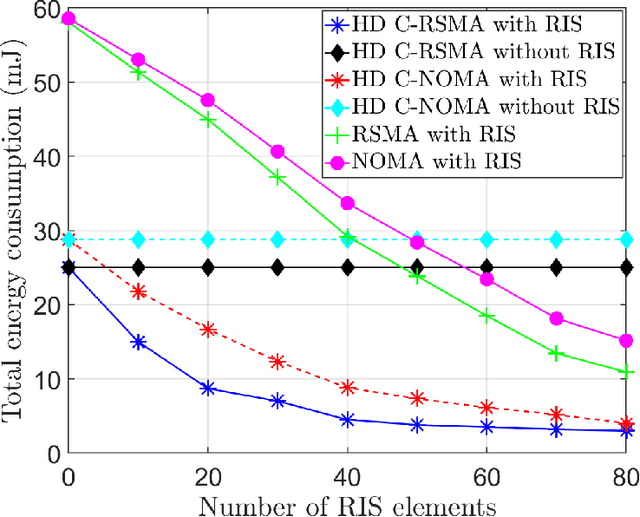
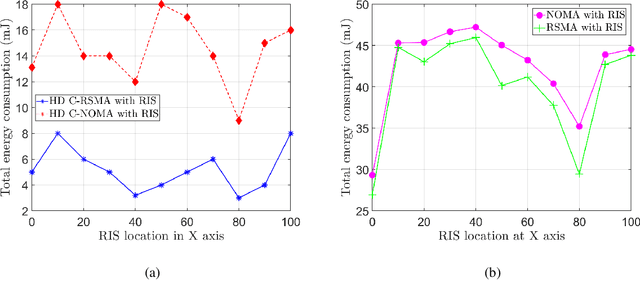
Abstract:This paper presents a downlink reconfigurable intelligent surface (RIS)-assisted half-duplex (HD) cooperative rate splitting multiple access (C-RSMA) networks. The proposed system model is built up considering one base station (BS), one RIS, and two users. With the goal of minimizing the network energy consumption, a joint framework to optimize the precoding vectors at the BS, common stream split, relaying device transmit power, the time slot allocation, and the passive beamforming at the RIS subject to the power budget constraints at both the BS and the relaying node, the quality of service (QoS) constraints at both users, and common stream rate constraint is proposed. The formulated problem is a non-convex optimization problem due to the high coupling among the optimization variables. To tackle this challenge, an efficient algorithm is presented by invoking the alternating optimization technique, which decomposes the original problem into two sub-problems; namely, sub-problem-1 and sub-problem-2, which are alternatively solved. Specifically, sub-problem-1 is to jointly optimize the precoding vectors, common stream split, and relaying device power. Meanwhile, sub-problem-2 is to optimize the phase shift matrix at the RIS. In order to solve sub-problem-1, an efficient low-complexity solution based on the successive convex approximation (SCA) is proposed. Meanwhile, and with the aid of difference-of-convex rank-one representation and the SCA approach, an efficient solution for the phase shift matrix at the RIS is obtained. The simulation results demonstrate that the proposed RIS-assisted HD C-RSMA achieves a significant gain in minimizing the total energy consumption compared to the RIS-assisted RSMA scheme, RIS-assisted HD cooperative non-orthogonal multiple access (C-NOMA), RIS-assisted NOMA, HD C-RSMA without RIS, and HD C-NOMA without RIS.
 Add to Chrome
Add to Chrome Add to Firefox
Add to Firefox Add to Edge
Add to Edge